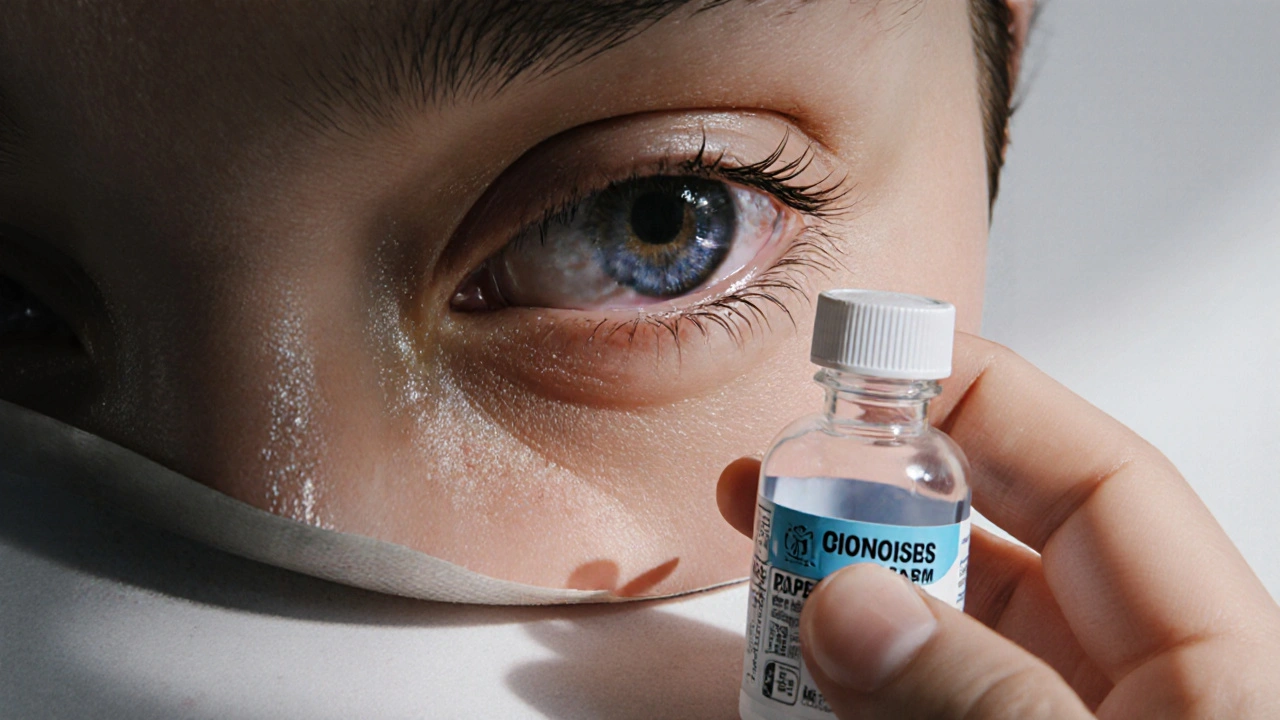A thorough side‑by‑side review of Cyclomune eye drops, its cyclosporine rivals, costs, effectiveness, safety, and practical tips for choosing the right dry‑eye treatment.
If your eyes feel gritty, red, or constantly dry, you’re not alone. Dry eye is a common problem that can pop up from screen time, low humidity, or even certain medicines. The good news is you don’t need a prescription for every fix. Simple changes at home and the right over‑the‑counter products can make a big difference.
Artificial tears are the first line of defense for most people. Look for preservative‑free drops if you need to use them several times a day. Put a drop in each eye whenever you feel the sting or after a long meeting in front of a computer. The drops add a thin film of moisture that reduces friction and clears the gritty feeling.
Don’t forget to blink often. When you stare at screens, your blink rate drops by half, letting the tear film evaporate faster. Try the 20‑20‑20 rule: every 20 minutes, look at something 20 feet away for 20 seconds and blink a few times deliberately.
Low humidity is a silent dry‑eye trigger. Use a humidifier in rooms where you spend a lot of time, especially in winter. Keep your computer screen a few inches below eye level; this encourages a natural downward blink.
Stay hydrated. Drinking enough water helps your body produce a healthy tear mix. Aim for at least eight glasses a day, and consider cutting back on caffeine and alcohol, which can dehydrate you.
If you wear contact lenses, switch to a daily‑disposable pair or use lenses designed for dry eyes. Clean them properly and replace them as recommended. Sometimes, a short break from contacts can give your eyes a chance to recover.
Warm compresses are a cheap, effective way to improve tear quality. Soak a clean washcloth in warm water, wring it out, and place it over closed eyes for five minutes. The heat loosens clogged oil glands, which are essential for a stable tear film.
Massage the eyelids gently after the compress. Use your thumb and index finger to roll the lower lid in a circular motion for a minute. This helps the glands release oil into the tear layer.
Omega‑3 fatty acids support eye health. Add a serving of fatty fish like salmon or a spoonful of flaxseed oil to your diet a few times a week. If you don’t eat fish, a daily omega‑3 supplement can also help.
If over‑the‑counter drops and lifestyle tweaks don’t bring relief after a couple of weeks, it’s time to talk to an eye doctor. They can check for underlying conditions such as meibomian gland dysfunction or autoimmune diseases that need specific treatment.
Prescription options include anti‑inflammatory eye drops, punctal plugs that block tear drainage, or therapies that stimulate tear production. A professional can guide you to the right choice based on your symptoms.
Dry eye may feel annoying, but with the right mix of drops, habits, and simple home tricks, you can restore comfort and keep your eyes happy.

A thorough side‑by‑side review of Cyclomune eye drops, its cyclosporine rivals, costs, effectiveness, safety, and practical tips for choosing the right dry‑eye treatment.